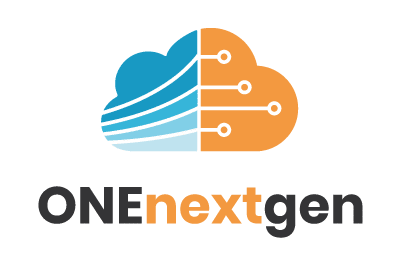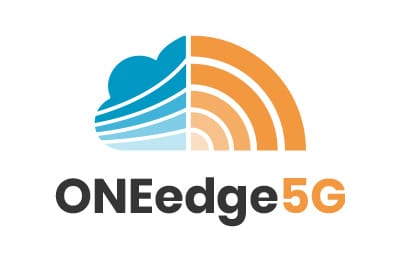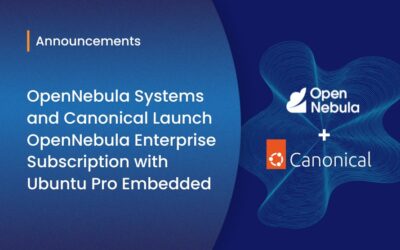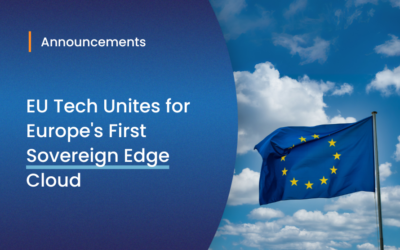We’re pleased to announce the release of OpenNebula 7.0 “Phoenix”, our most transformative and disruptive version yet. This major upgrade marks a significant milestone for organizations building sovereign, AI-ready, and edge-capable cloud infrastructures. It introduces powerful advancements in storage, intelligent automation, hybrid multi-provider cloud integration, and GPU-accelerated AI workloads—providing a clear and future-proof alternative to legacy virtualization platforms.
Designed for VMware Re-virtualization
OpenNebula 7.0 introduces breakthrough features for organizations migrating from VMware. With AI-powered DRS, native integration with NetApp’s iSCSI and Veeam backups, a completely redesigned LVM backend, and support for importing OVA files, it significantly streamlines and simplifies the transition process.
Shared storage management is easier thanks to automated NFS mount configuration, and local datastore performance has been greatly improved with a complete rewrite supporting modern disk operations.
This release also brings full backup support for LVM datastores and incremental backups for Ceph, laying the foundation for reliable, enterprise-grade backup strategies.
Smarter Resource Management
To help optimize infrastructure and reduce overhead, OpenNebula 7.0 introduces OneDRS, our AI-powered alternative to VMware DRS. It offers:
- Predictive scheduling
- Customizable automation levels
- Flexible migration thresholds.
Combined with the new time series monitoring framework, OneDRS enables better capacity planning and faster reactions to usage trends.
Administrators can now apply cluster-level quotas for more granular control over resource consumption—especially useful for edge or multi-tenant environments.
In addition, Generic Quotas support tracking of custom resources like vGPUs or software licenses, enabling tailored governance for advanced workloads.
Built for AI Factories
With this release, support for AI workloads becomes first-class. OpenNebula 7.0 introduces enhanced PCI passthrough and full compatibility with NVIDIA-mediated vGPU devices, enabling seamless acceleration for demanding AI and HPC applications.
GPU resource allocation is flexible and scalable, with:
- vGPU profiles and PCI devices configurable per host or cluster
- Fine-grained control across heterogeneous hardware environments.
We’ve also upgraded our appliance catalog. The Ray Appliance now includes:
- vLLM support
- OpenAPI compatibility
- Hugging Face integration
- Model quantization
- Multi-GPU configurations.
These capabilities have also been extended to the NVIDIA Dynamo Appliance, providing teams with the foundation needed to run production-grade inference workloads. OpenNebula 7.0 also integrates with NVIDIA NIM and offers advanced integration features for building isolated networking through BlueField-3 DPUs.
Multi-Cloud and Edge-Ready by Design
OpenNebula 7.0 prepares you for distributed cloud strategies with foundational improvements to hybrid provisioning.
While a full redesign of the provisioning engine is underway for a future maintenance release, this version already includes internal updates that:
- Expand support for additional cloud providers
- Simplify cluster setup.
Official ARM-based architecture support is now included, with packages and Marketplace appliances available for the aarch64 ecosystem.
A Modernized Experience
With this release, we’re taking usability to the next level.
The Sunstone GUI has been updated with:
- Improved accessibility
- Refined navigation
- Clearer data visualization.
A new cloud view provides end users with real-time performance metrics and streamlined access to key actions, while developers can take advantage of Dynamic Tabs to integrate third-party tools directly into the interface.
Other enhancements include:
- Better security and performance for VNC access
- Improved rendering of user inputs during appliance import
- Introduction of VM Template Profiles to simplify provisioning with predefined configurations.
Kubernetes, Networking and Beyond
From updated support for Windows guest operations to the new CAPI/Rancher Appliance for RKE2 cluster management, OpenNebula 7.0 strengthens its Kubernetes integration.
You can now deploy and manage Kubernetes clusters through Rancher’s UI using our Cluster API implementation.
On the networking side:
- Transparent proxying simplifies access to external services like OneGate
- VLAN filtering streamlines tenant isolation when using Linux bridge-based networking.
Migrator Package Now Included for Community Users
As part of our commitment to broadening access and simplifying OpenNebula adoption, version 7.0 now includes migrator packages to upgrade from version 6.10. This enhancement streamlines version transitions, making it easier for community users to stay up to date and take full advantage of the platform’s latest innovations.
Enterprise Edition subscribers continue to benefit from additional capabilities, including maintenance updates, long-term support (LTS) upgrades, and seamless integrations with key enterprise components in the data center—such as NetApp and Veeam.
The Meaning Behind “Phoenix”
OpenNebula 7.0 is named “Phoenix” to reflect a broader industry transformation—organizations rising from aging infrastructure and rigid vendor lock-in to embrace open, sovereign, and intelligent cloud solutions.
Many innovations in this release were developed through the €3 billion IPCEI-CIS initiative, underscoring our key role in enabling next-generation cloud capabilities..
The New 7.x Next-Generation Series
Version 7.0 marks the first release in our next-generation series, introducing a major architectural leap with a redefined cloud-edge orchestration engine. This new foundation is designed to support distributed, sovereign, and intelligent infrastructure across hybrid and multi-provider environments.
We are already working on version 7.2, which will continue to deliver cutting-edge innovations as part of this strategic evolution.






0 Comments